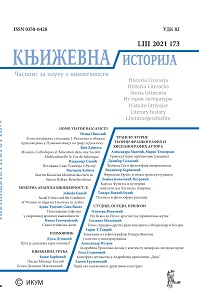Испољавање суфизма у савременој арапској књижевности
Manifestations of Sufism in Contemporary Arabic Literature
Author(s): Ayman Tealip, Saeed AlwakeelSubject(s): Other Language Literature
Published by: Институт за књижевност и уметност
Keywords: sufism;poetry;prose;contemporary Arabic literature;
Summary/Abstract: Contemporary Arabic literature is usually divided into the following three main periods: neoclassical (1834–1914), which coincides with the Arab Renaissance, al-Nahda; romantic (1914–1945); and finally the period of realism, modernism and postmodernism, starting after the Second World War, comprising a multitude of different movements and approaches. The Sufi experience is one of the most fruitful spiritual and aesthetic experiences in Arabic literature, as is apparent from the Sufi poetry and prose heritage. The very structure of the Sufi experience was characterized by a deep dramatic tension between the earthly and the divine, between the transient and the eternal, between structure and rebellion against the structure. Being charged with contradictions, upheaval and tension allowed the Sufi experience to make huge cognitive and creative shifts between different philosophies and schools of aesthetics: classicism, romanticism, realism, modernism and postmodernism. Perhaps this can help explain the intense, multifaceted presence of the Sufi experience in the contemporary and modern Arab literary output. A presence is exhibited through the use, citation, intertextuality, putting on various literary and artistic disguises, as well as other modern artistic techniques in poetry, prose and contemporary art in general. All the while, the reader does not feel that there is an artistic gap between the spirit of the Sufi text on the one hand and the modern literary text on the other. Many similarities between the two are readily apparent. Both types of text draw on imagination, symbolism and the sublime; they strive towards the frontier of change, beyond the current boundaries; they are both brimming with dramatic tension, contradictions in their vision, transformation, rebellion, and opposition. This is because the Sufi spirit is first and foremost a philosophy of life, and not a creative, epistemological and aesthetic view of existence.
Journal: Књижевна историја
- Issue Year: 53/2021
- Issue No: 173
- Page Range: 103-126
- Page Count: 24
- Language: Serbian

